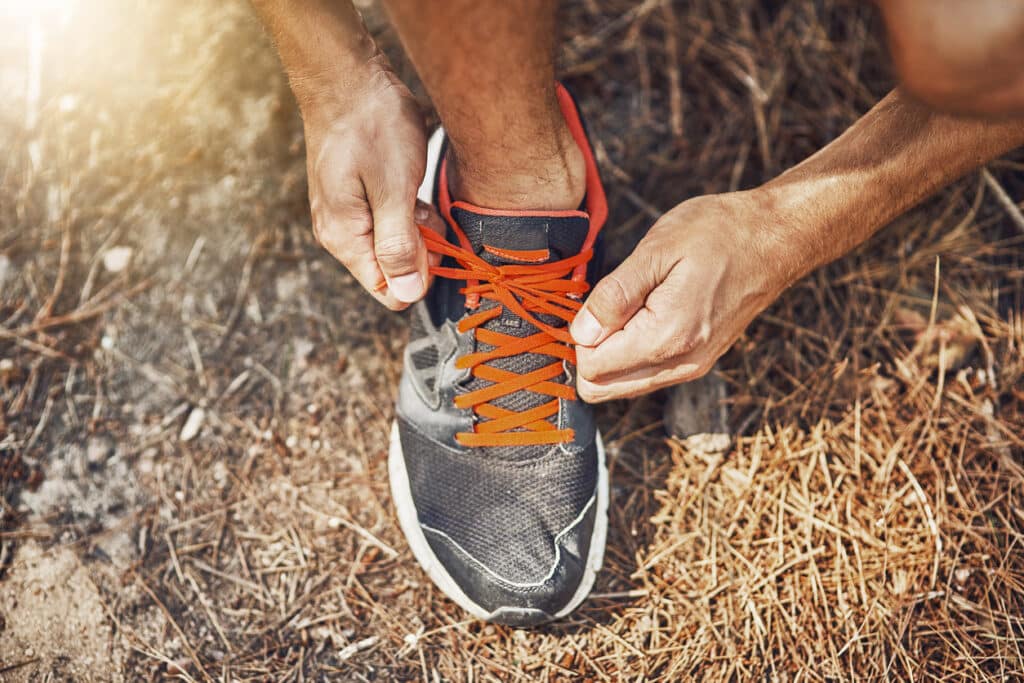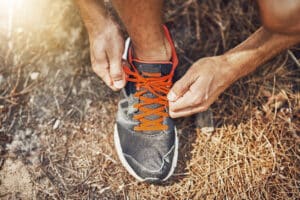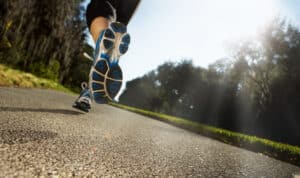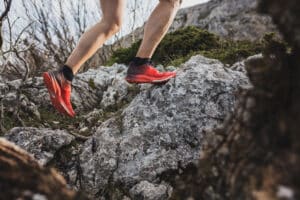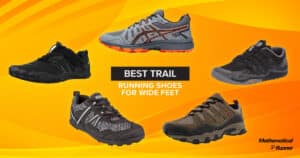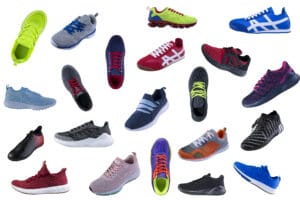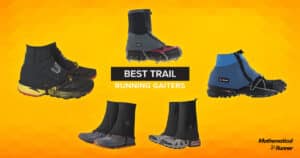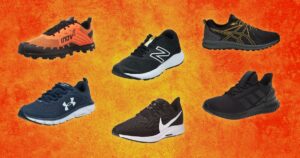Is it not the first time your trail running shoes have worn out after using them for a few days? Mostly, it is the outsole of the upper that gets damaged under pressure.
‘What to look for in trail running shoes’ is another common question as Most of the readers have just decided to start this activity to improve their health and keep themselves fresh. However, when you check this footwear on online shopping stores or visit some famous market, you get confused as each of them draws your attention towards itself. Though they look tempting, not every shoe is suitable for you and can cause foot injuries if you rush to make a decision.
Before a trail runner hands over some dollars for a shoe, it is important to look for the adequate cushioning material and both the quality and material of the outsole which should be durable and wear-resistant. Moreover, one should confirm that a particular shoe model fits perfectly.
In this blog, I have listed some guidelines and aspects while checking the specifications of any trail running shoe. In addition, I have also included some good-quality products to give you a better idea.
Type Of Shoes:

The first aspect that one should keep in mind while choosing trail shoes is their type. It is determined by the kind of terrain you want to head for in the future. Also, take note that good-quality footwear takes at least six months to completely wear off. So if you want to purchase an item that is best suited to your requirements, you should try to get this factor right the first time. Following are the different constructions of shoes for different land surfaces.
Light Trail Running Shoes :
Manufacturers design light trail running shoes for people who run on somewhat even and hard surfaces. They have basic features yet properties that are essential to allow you to cover long distances without discomfort. They are ideal for those who prefer pavements, gravel sites, roads, and hilly areas.
When it comes to the midsole, they either have less cushioning so that your feet can feel the surface beneath better or sufficient padding to provide support to the bottom of a runner’s feet. Furthermore, they also include foam materials in areas protecting heels and ankles which minimizes the potential of getting hurt from incoming large stones and plant roots.
These shoes offer some stiffness to keep your feet in a stable position so they do not move or twist easily, especially when you take turns on a trail. Another quality to look for in these products is their weight. It is essential that you choose to wear lightweight shoes for covering miles regularly without having to struggle to move your feet and legs. Those who have previously used bulky shoes might agree with me. They will undoubtedly notice an improvement in the distance covered in a set time after estimating it through a running pace calculator by shifting to light shoes.
Rugged Trail Running Shoes:
As their name suggests, rugged trail running shoes are specially built for people who are into camping on a hillside, aim for hiking, or love exploring mines and caves. Here, the designers have to enhance the degree of protection and use strong materials that offer excellent shock absorbance and prevent your feet from getting rubbed on rocky terrain.
One of the important additions to these products is a rock plate, which is a hard plastic or carbon layer between the midsole and outsole of footwear. It not only shields your foot from sharp things but also the product material from coming off.
The midsoles in these shoes have more cushioning than regular items to serve an important purpose. They minimize the possibility of falling while descending from steep hills and resist the outward pressure when you cross the hard slabs. Furthermore, these shoes must have a stiff inner (some have shanks), with the upper having the ability to support your feet so that you continue to take strides without losing your balance.
Shoes for rugged trails that are worth buying also include lugs all over the thick soles for enhanced safety by providing great friction. With a lugged outer, you can move over gravel and rock slabs as well as cover the greasiest mud trails and soils which usually seems impossible. It is also attributed to the wide spaces left in the lug design that helps in the removal of slick mud.
When it comes to the material of the outsole, you can prefer both soft rubber or harder and stiff material. However, in terms of durability, harder and less-grippy soles are more long-lasting in most cases.
Off-Trail Running Shoes:
Off-trail running shoes are for those people or sportsmen who select to tread more dangerous paths. In terms of construction, these products are similar to hiking or muddy terrain shoes. However, there are some enhancements to ensure maximum protection for both the runner and shoe material.
As compared to shoes for rugged trails, they might be a few pounds heavier. The type of material is more resistant to wear from external pressure, heat, and water. Ethylene-vinyl acetate (EVA) foaming in midsoles is common in good-quality off-trail footwear. Brands also use other resilient polymers for developing this part of shoes.
Some readers might have experienced ankle or foot twisting while landing on a hard ground which gives immense pain and restricts movement for a few days. There are high chances of these types of incidents on steep and slippery surfaces. To prevent this from happening, designers enhance the rigidity of a shoe structure to stop rotational movement when a considerable torque is applied.
Drop Between Heel And Toe:
Heal-to-toe-drop is a term used to refer to the difference between the heights of the heel and toe or forefoot of a shoe. Since cushioning is present in these areas, it has a significant connection with this measurement. You must have noticed the lower levels of heels in some shoes, while others have heightened heels. It can be either as low as 0mm (in barefoot shoes for maximum responsiveness) or as high as 12mm. Usually, this aspect is determined by the shoe design and its function.
It might seem challenging to select an item with an appropriate heel drop, but it is pretty simple if you follow some instructions. Observe the height of the heels of your current running shoes or those in which you feel most comfortable. Match this drop with the running shoes you are interested in purchasing. In case you have worn these types of shoes previously, you can check regular shoes in the footwear collection. They have a minimalistic design with their heel drop in the range of 0-5mm. Here, you can choose shoes in this range without having to stress about a negative experience in the future.
The lower the heel-to-toe-drop, the more stable the forward movement with great muscle coordination. This feature, in most situations, is unique to toe-nail or minimalistic shoes. However, if you prefer rugged or rocky trails, I suggest looking for shoes with at least a 10mm heel drop. The reason behind this recommendation is the maximum support they offer through some additions I have mentioned above. They will be safer for you as compared to barefoot ones.
Foam Padding:
Cushioning, also known as stack height, is another factor to consider before bringing a trail running shoe to your house. Cushioned shoes have been in the shoe market for years. However, shoes with minimal padding have also gained popularity in the last decades. Following are the range of designs based on cushioning spectrum:
Zero Padding:
Companies have introduced shoes with no cushioning for those athletes who desire to enjoy running while experiencing the ground texture to their best. They also contribute to the steady movement as their construction is significantly close to the biomechanics of humans. Therefore, if you want to perform this activity and like being closer to the natural mechanism, you should try these shoes.
Minimal Cushioning:
In case you are inclined towards barefoot shoes but do not want to compromise on comfort level as well, shoes with 2-4mm heel drop might be perfect for you. They include support material that is sufficient enough for long runs and prevents muscle fatigue. These shoes are also suitable for people who sometimes suffer from pain in their feet or legs as they reduce the pressure on these body parts.
Medium Padding:
Shoes with medium padding provide ample comfort and support. Some of the great cushioning materials are Ortholite, which is present in models that are designed for rugged trails and tracks near forests. Generally, these shoes won’t let you feel the surface much while moving. If you are not preferring the ‘feel’ here, you might get interested in buying a pair with average cushioning. When it comes to the target customers, these products are best for securing the feet from sharp and rough objects.
Maximum Padding:
Most readers might have guessed the purpose the shoes with considerable cushioning are designed for. The intense support added is to aid the runners who head for risky off-road trails. However, these improvements in some models can cause discomfort in many runners, as they can seem tighter or reduce the stability.
Shoe Size:
How often have you faced a situation when everything was the point but you failed to get the correct shoe size? If someone gets a trail running shoe that fits tightly and needs some effort to keep the feet in a straight position, it can lead to severe pain, swollen toes, and even blisters.
On the other hand, wearing a fit a few inches off of your regular foot size increases the probability of falling and severe injuries when running on rough and uneven surfaces.
Hence, you should prioritize selecting the best fit so that you can cover several miles smoothly without hurting yourself. To achieve this goal, the simplest effort you can do is to measure your foot dimensions.
Even if you know this site, you should not ignore this step as there can be an unnoticeable and gradual change in this property which is healthy for a growing body. If you are not sure or confident that you have estimated the size accurately, it is better to get this assessment through an experienced staff member in a footwear store or an experienced shoe specialist.
Frequently Asked Questions
You can wear trail running shoes with minimum or medium padding for running on roads or pavements. Moreover, you should choose a pair only if it has a hard and strong rubber outsole that can perform well on hard surfaces. Also, the shoes should offer excellent shock absorption.
Yes, one can wear trail runners for running with snowshoes. Making an addition of socks helps in maintaining the normal temperature of your feet.
Yes, trail running shoes for hiking purposes are heavy due to intense cushioning and more protection than regular running shoes. The more the foam material, the more the weight of this footwear.
Conclusion
What to look for in trail running shoes? I hope that you have found the tips and guidelines regarding this topic beneficial and comprehensive. Prior determination and investigation for buying a pair of shoes allows you to run in a pleasant mood, promotes healthy activity, and motivates you for more trail running. In addition, the achievement of this goal saves your time, effort, and hundreds of dollars.
RELATED ARTICLES

